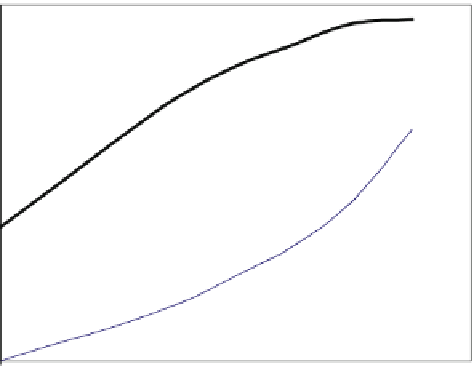Agriculture Reference
In-Depth Information
•
Measure the soil moisture up to the desired depth (root zone) at different points
throughout the furrow after reaching field capacity
•
Determine the wetted cross-section of the furrow at several sections and aver-
age them
Data Processing
-
determine infiltration function
-
determine different performance indices (such as distribution uniformity, applica-
tion efficiency, deep percolation ratio, deficit ratio), as defined earlier
Advance and recession curves can be drawn from the recorded data (distance vs
advance/recession). The difference between advance time and recession time (cal-
culating from the starting of test) at each point represents the infiltration opportunity
200
Recession
150
100
Advance
50
0
0
50
100
150
200
250
300
350
400
Distance, m
Fig. 4.1
Advance and recession curve
Volume balance approach can be applied to find out different components of
water balance (e.g., infiltration, deep percolation). Volume balance approach is
based on the principle of mass conservation. At any time, the total volume of
water that has entered the furrow must be equal to the sum of the surface storage,
subsurface storage (infiltrated), deep percolation (if any), and runoff (if any).
4.2.6.5 Sprinkler Irrigation Evaluation
A sprinkler water distribution pattern depends on system design parameters and on
environmental variables (such as wind speed and direction). Wind speed affects not
only uniformity, but also evaporation and wind drift losses.


















Search WWH ::

Custom Search